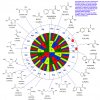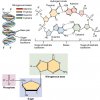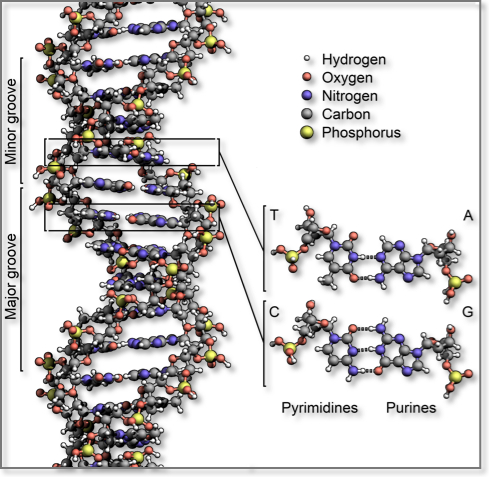Halman9000
Well-Known Member
Types of Amino Acids
Despite over 500 known amino acids, with an infinite number of possible variations, there are only 20 amino acids deemed necessary for human health. These amino acids are grouped into three categories – essential, non-essential, and conditionally essential.
In addition, some of these amino acids can also be classified as branched-chain amino acids, as well as other amino acids of nutritional value that don’t neatly fit into these other categories.
Free Form Amino Acids versus Proteins .
When they say eggs have significant amounts of all of the essential amino acids , what is really going on is that the many different protiens in eggs have to be digested by the human digestive system , before we get free form amino acids that the body can use .
Free Form Amino Acids is what a person can buy to feed a plant with . Some people add a couple amino acids plus Calcium mixed together . The two Amino Acids open a calcium channel in the roots so that much more calcium can make it into plant . Most Chelated Minerals are Chelated using Amino Acids . Some Minerals are Chelated using other things like other acids for example .
Free Form Amino Acids are also sold as a supplements Humans take for health purposes .
Here are some images that related to DNA
The following image shows an "R" at the bottom of the Amino Acid Molecule .
I think the "R" stands for a Side Chain Molecule , or Molecules , that varies from one Amino Acid to another Amino Acid .

The next Image is a Codon Wheel which describes the molecules that are used to make each specific Amino Acids .

The next image is about the Genetic Code
The genetic code is highly similar among all organisms and can be expressed in a simple table with 64 entries.[1]

The next image shows what Nucleotides are made of . I am not sure what Nucleotides are but they must be involved in the Genetic Code somehow .

And the next image shows something to do with Nucleic Acids which are made up of Nucleotides I think .

This link I am now posting , is the best overal well written article about DNA and the related information .

 cm.jefferson.edu
cm.jefferson.edu
P.S. enzymes occur mostly inside cells in large quantities and they are proteins folded in a three dimensional shape . They interact with organelles and other things to allows a process to occur and a speed that is thousands of times faster than if the enzyme was not availabe to intneract .
Halman9000
Despite over 500 known amino acids, with an infinite number of possible variations, there are only 20 amino acids deemed necessary for human health. These amino acids are grouped into three categories – essential, non-essential, and conditionally essential.
In addition, some of these amino acids can also be classified as branched-chain amino acids, as well as other amino acids of nutritional value that don’t neatly fit into these other categories.
- Essential – Essential amino acids are those that the human body cannot synthesize (produce) on its own; they’re always obtained from the diet, without exception. There are nine essential amino acids – histidine, isoleucine, leucine, lysine, methionine, phenylalanine, threonine, tryptophan and valine. A recommended daily allowance (RDA) of about 15,000 mg per day has been established by the National Academy of Sciences for adults 19 and older.
- Non-Essential – Non-essential amino acids can be assembled or synthesized by the human body from ingested materials and do not need to be obtained from the diet. There are four non-essential amino acids – alanine, asparagine, aspartic acid, and glutamic acid.
- Conditionally Essential – Normally your body is capable of producing conditionally essential amino acids and doesn’t need to obtain them from your diet. However, in certain stressful situations, the body requires higher levels of these amino acids and obtains them from your diet. You may see these amino acids also referred to as conditionally non-essential, but they’re one and the same. There are seven conditionally essential amino acids – arginine, cysteine, glutamine, tyrosine, glycine, proline, and serine.
- Branched-Chain Amino Acids – The essential amino acids leucine, isoleucine and valine collectively are referred to as the branched-chain amino acids (BCAAs).This amino acid group accounts for approximately 35% of the essential amino acids in muscle proteins, with 40% required from a healthy diet. They’re critical for muscle protein synthesis and they support normal muscle repair processes.*
- Free-Form Amino Acids – Free-form amino acids refer to single amino acids that are already in a pre-digested form and ready to be used by your body. Some nutritional products, especially amino acid blends, contain whole proteins and large peptides (chains of amino acids), which the body must first break down into smaller peptides and individual amino acids before use. For faster utilization and better bioavailability, look for free-form amino acids.
Free Form Amino Acids versus Proteins .
When they say eggs have significant amounts of all of the essential amino acids , what is really going on is that the many different protiens in eggs have to be digested by the human digestive system , before we get free form amino acids that the body can use .
Free Form Amino Acids is what a person can buy to feed a plant with . Some people add a couple amino acids plus Calcium mixed together . The two Amino Acids open a calcium channel in the roots so that much more calcium can make it into plant . Most Chelated Minerals are Chelated using Amino Acids . Some Minerals are Chelated using other things like other acids for example .
Free Form Amino Acids are also sold as a supplements Humans take for health purposes .
Here are some images that related to DNA
The following image shows an "R" at the bottom of the Amino Acid Molecule .
I think the "R" stands for a Side Chain Molecule , or Molecules , that varies from one Amino Acid to another Amino Acid .

The next Image is a Codon Wheel which describes the molecules that are used to make each specific Amino Acids .

The next image is about the Genetic Code
The genetic code is highly similar among all organisms and can be expressed in a simple table with 64 entries.[1]

The next image shows what Nucleotides are made of . I am not sure what Nucleotides are but they must be involved in the Genetic Code somehow .

And the next image shows something to do with Nucleic Acids which are made up of Nucleotides I think .

This link I am now posting , is the best overal well written article about DNA and the related information .

DNA and RNA | Computational Medicine Center at Thomas Jefferson University
1. DNA 1.1 DNA basics / structure DNA (deoxyribonucleic acid) is the genomic material in cells that contains the genetic… Continue reading
 cm.jefferson.edu
cm.jefferson.edu
P.S. enzymes occur mostly inside cells in large quantities and they are proteins folded in a three dimensional shape . They interact with organelles and other things to allows a process to occur and a speed that is thousands of times faster than if the enzyme was not availabe to intneract .
Halman9000
Last edited:
